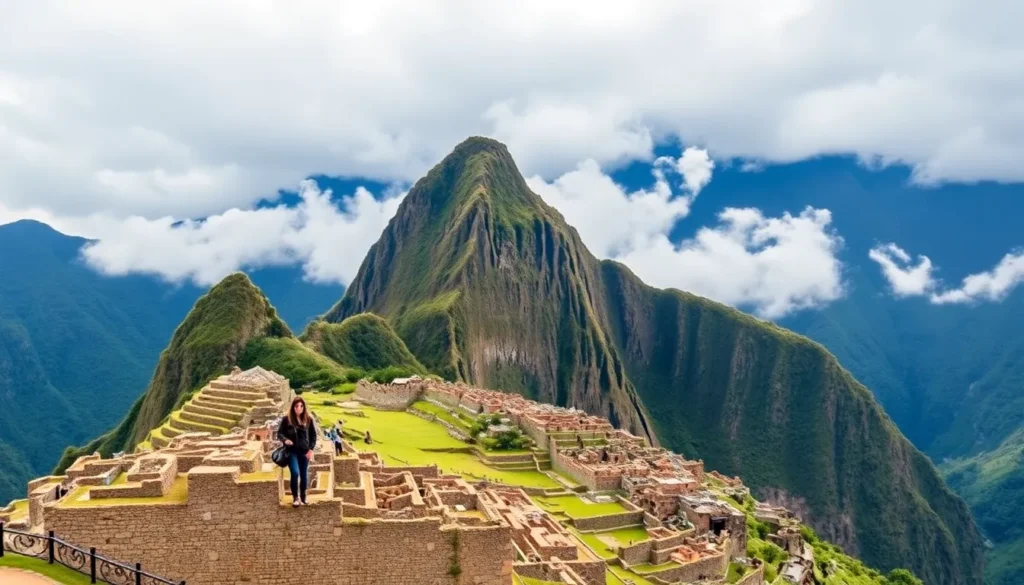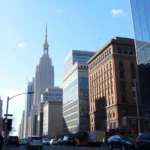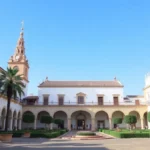Best time to visit Peru for an unforgettable experience

If you're pondering about the best time to travel to Peru, you're in for an adventure! This South American gem offers a tapestry of landscapes, cultures, and experiences that vary dramatically throughout the year. Whether you're aiming to explore the ancient ruins of Machu Picchu or relax on its stunning beaches, understanding the climate and seasonal variations is crucial for crafting your ideal itinerary.
Peru's climatic diversity is nothing short of extraordinary. The country is dramatically shaped by the Andes mountains stretching from north to south and the influence of the nearby Pacific Ocean, which creates a range of microclimates. From the lush jungles of the Amazon to the arid deserts of the coast, the weather can significantly vary based on the region and the time of year you choose to visit.
This variety means that the answer to when is the best time to travel to Peru isn't straightforward; it largely depends on your destination and the experiences you wish to have. In this guide, we’ll delve into the optimal months to visit Peru, offering insights on regional climates and highlighting the best times for specific attractions.
Understanding Peru's Seasons
Peru generally experiences two main seasons:
- Dry Season: April to October, characterized by milder temperatures, sunny days, and reduced rainfall.
- Wet Season: November to March, featuring increased rainfall, particularly in the highlands and jungle regions, which can lead to disruptions in travel plans.
For most travelers, the dry season is the most favorable time to visit, as the weather is more predictable, making it easier to plan outdoor activities and excursions. However, understanding the nuances of each region will further enhance your travel experience.
Best time to visit Machu Picchu
Machu Picchu is undoubtedly one of Peru's most iconic destinations. The ideal time to visit is during the dry season, from May to November. While rain can still occur, the likelihood decreases significantly compared to the wet season.
To maximize your experience:
- Avoid the peak tourist months of July and August if you prefer fewer crowds.
- Consider visiting in May or September for pleasant weather and less congestion.
- Always check local weather forecasts for the best conditions.
The breathtaking views of the sun rising over the ancient ruins are worth the trip, and visiting during the dry season can enhance this magical moment.
Traveling to the Peruvian Coast
The Peruvian coast offers a different climate, primarily a subtropical desert. The best time to visit is during the dry season, specifically from May to October. This period provides mild temperatures and clear skies, ideal for sunbathing and exploring coastal cities like Lima and Paracas.
During the summer months (December to March), expect higher temperatures and humidity, which can be uncomfortable for some travelers. However, spring (April and October) is also a pleasant time to explore, as temperatures are generally moderate.
Exploring the Andean Highlands
The Andean region, home to cities like Cusco and Arequipa, features a highland climate with cool temperatures. The best time to visit is again during the dry season, from April to October. During this period, visitors can enjoy clear skies and pleasant temperatures, perfect for hiking and outdoor activities.
In the highlands, it’s essential to prepare for temperature fluctuations:
- Daytime can be warm, but nights can get chilly.
- Dress in layers to adapt to changing weather conditions.
- Be aware of altitude sickness, and allow time to acclimatize.
Traveling during the wet season (December to March) can mean dealing with heavy rains, especially in January and February, which may hinder your travel plans.
Discovering the Amazon Rainforest
The Amazons, primarily accessed via Iquitos or Puerto Maldonado, offers an entirely different experience. The climate here is tropical and humid year-round, but the wet season (December to March) sees increased rainfall, making this a less desirable time for many travelers.
For an optimal visit:
- Plan your trip during the dry months, from May to October.
- Be prepared for heat and humidity at any time of year.
- Pack lightweight clothing, a reliable rain jacket, and insect repellent.
The rainforest's vibrant ecosystem is best enjoyed when the weather is more stable, allowing for wildlife spotting and exploration of lush landscapes.
Climate nuances in specific regions
Understanding the distinct climates of various regions in Peru is vital for planning your trip. Here are some highlights of different areas:
- Lima: Mild and humid, best visited from December to April for warmer weather.
- Cusco: Best explored from April to October, with chilly nights and warm days.
- Iquitos: Warm and humid throughout the year, with the driest months being May to October.
- Tarapoto: Similar to Iquitos, with a wet season from December to March, making the dry months ideal for visits.
When is the cheapest time to travel to Peru?
While the dry season is favored for travel, visiting during the winter months (December to March) can yield cheaper flights and accommodation options, as this is considered the off-peak season. However, be prepared for rain and potential travel disruptions in the highlands and jungle.
To secure the best deals:
- Book your flights and accommodations well in advance.
- Consider traveling in the shoulder months (April, May, September, October) for better rates while still enjoying decent weather.
- Keep an eye out for discounts and special offers from travel agencies and airlines.
For visual learners, check out this informative video that summarizes the best times to visit Peru and its various regions:
Final Thoughts on Traveling to Peru
In conclusion, the best time to travel to Peru largely depends on the regions you plan to explore and the experiences you seek. The dry season from May to October is generally the most popular due to favorable weather conditions, but shoulder months offer a great balance between good weather and fewer crowds.
Prepare for the diverse climates across the country, and don't forget to consider the unique cultural experiences each region has to offer. With its rich history, stunning landscapes, and mouthwatering cuisine, Peru is undoubtedly a destination worth exploring at any time of the year.




Deja una respuesta